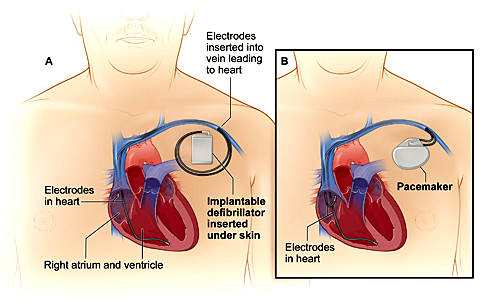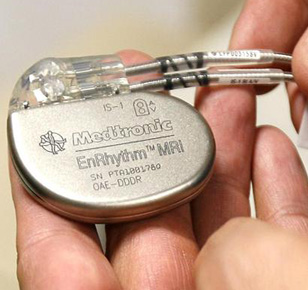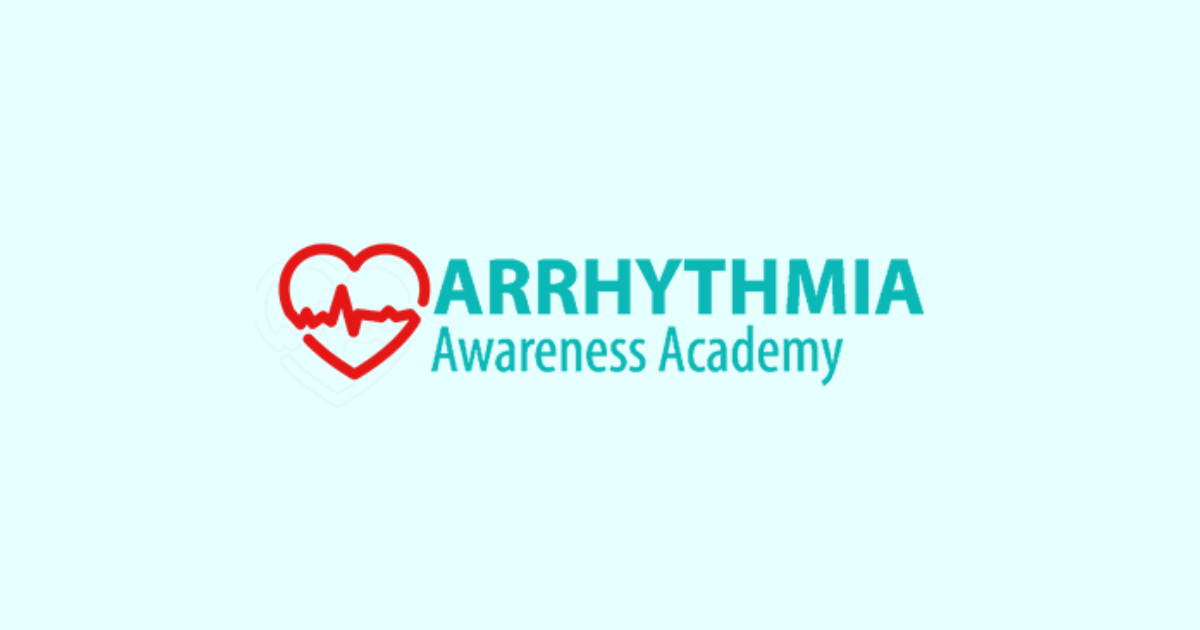What Is an Implantable Cardioverter Defibrillator?
An implantable cardioverter defibrillator (ICD) is a small device that’s placed in your chest or abdomen. The device uses electrical pulses or shocks to help control life-threatening, irregular heartbeats, especially those that could cause sudden cardiac arrest (SCA).
SCA is a condition in which the heart suddenly and unexpectedly beats chaotically and fails to effectively pump any blood. When this happens, blood stops flowing to the brain and other vital organs. This usually causes death if it’s not treated within minutes. The quicker it is treated, the less risk of death or permanent damage to vital organs.
Understanding the Heart’s Electrical System
Your heart has its own internal electrical system that controls the rate and rhythm of your heartbeat. With each heartbeat, an electrical signal spreads from the top of your heart to the bottom. As the signal travels, it causes the heart to contract and pump blood.
First, the heart’s two upper chambers, the atria contracts. This contraction pumps blood into the heart’s two lower chambers, the ventricles . The ventricles then contract and pump blood to the rest of the body. The combined contraction of the atria and ventricles is a heartbeat.
Overview
A problem with any part of the heart’s electrical system can cause irregular heartbeats called arrhythmias. During an arrhythmia, the heart can beat too fast, too slow, or with an irregular rhythm. Faulty electrical signaling in the heart causes arrhythmias.
ICDs use electrical pulses or shocks to treat life-threatening arrhythmias that occur in the ventricles (the heart’s lower chambers).
When ventricular arrhythmias occur, the heart can’t effectively pump blood. You can pass out within seconds and die within minutes if not treated. To prevent death, the condition must be treated right away with an electric shock to the heart. This treatment is called defibrillation.
An ICD has wires with electrodes on the ends that connect to your heart chambers. The ICD will continually monitor your heart rhythm. If the device detects an irregular rhythm in your ventricles, it will use low-energy electrical pulses to restore a normal rhythm.
If the low-energy pulses don’t restore your normal heart rhythm, or if your ventricles start to quiver rather than contract strongly, the ICD will switch to high-energy electrical pulses for defibrillation. These pulses last only a fraction of a second, but they can be painful.
Doctors also treat arrhythmias with another device called a pacemaker. An ICD is similar to a pacemaker, but there are some differences.
Pacemakers can only give off low-energy electrical pulses. They’re used to treat abnormal slow heart rhythms. All ICDs have pacemaker features, and can treat slow heart rhythms. However, the main function of an ICD is to treat the rapid, life-threatening rhythms with rapid pacing or shocks. The battery, or generator, of an ICD is significantly larger than the generator of a pacemaker, since it must store energy and be able to deliver that high energy to the heart (deliver a shock) for treatment of life-threatening heart rhythms.
Comparison of an Implantable Cardioverter Defibrillator and a Pacemaker

The illustration compares an ICD and a pacemaker. Figure A shows the location and general size of an ICD in the upper chest. The wires with electrodes on the ends are inserted into the heart through a vein in the upper chest. Figure B shows the location and general size of a pacemaker in the upper chest. The wires with electrodes on the ends are inserted into the heart through a vein in the upper chest.
Patients who have heart failure may need a special device called a cardiac resynchronization therapy (CRT) device. The CRT device is able to pace both ventricles at the same time. This allows them to work together and do a better job pumping blood out of the heart. CRT devices that have a defibrillator are called CRT-D.


